Ever heard the term “Room Resonances” or Room Nodes and wondered what they referred to? Don’t worry you are not alone. If you are seeking the best place to use absorption to reduce acoustical energy issues within your room, you will quickly realize that it is not where your waves of energy meet the wall. This is called a node. A node is a position of minimum air velocity and maximum air pressure. Most of the time, in our small room acoustical environments, you will find the correct area in what is called an antinode. An antinode is a position where we have maximum air velocity and minimum air pressure. To examine this issue more closely, we turn to the quarter wavelength rule. We have updated this blog on 11/28/19.
Room Resonances Explained
If we view the wall as our node, then we can look for any adjacent nodes by looking at positions away from the wall. To find the nearest node, we need to look at a distance that will be measured in a half wavelength from the wall. To locate the antinode or area of maximum air velocity and minimum air pressure, you need to look at a distance that is halfway between those two points or one-quarter of the wavelength distance from the wall. This system will work for any frequency that you choose to examine within the room. This is where you need to focus your attention to room resonances.
Quarter Wavelength Rule
If we choose a frequency of 50 Hz. we are working with a wavelength of 1130 (speed of sound in ft/sec.) / 50 Hz. = 23′. To find the quarter wavelength of a 50 Hz. wave, we take that number 23 and divide it by 4. This produces a quarter wavelength of 5.7′ with a 50 Hz. wave. If our intention is to reduce the impact of this 50 Hz. wave through absorption, we would start the application of our sound absorbing technology at that 5.7′ distance from the room boundary surface. To absorb all frequencies above 50 Hz., we would need to hang many layers of material at that 5.7′ quarter wavelength distance.
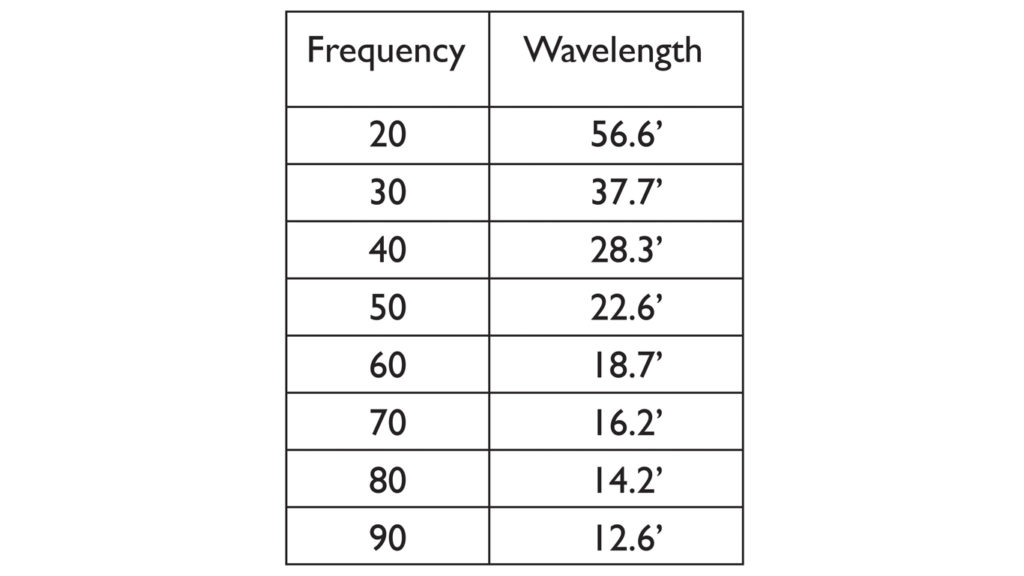
Frequency Vs. Wavelength 20Hz – 90Hz
Science Not Myth
Following this quarter wavelength rule, we can turn our attention to open celled acoustic foam which is a common sound-absorbing technology. If we take a layer of 2″ acoustic foam, you can do the same calculations. A 500 Hz. wave is 2.3′ in length. If you divide that number by 4 (quarter wavelength) you get approximately 6″. Therefore, a 6″ thick layer of open-celled acoustic foam will absorb starting at 500 Hz.and will keep going up from that frequency. All open celled acoustic foams that are 6″ thick, will react this way.
Open Celled Acoustic Foam
To find a foam that will perform differently you have to look at how the foam is made. Most manufacturers seek to absorb the most amount of energy in the smallest amount of space. Obviously, this is done to save space because today’s smaller rooms need acoustical treatment but have minimal space in which to place the material. Getting more absorption in a smaller amount of space requires that the manufacturer choose design processes that have more uniformity in cell structure within the foam and a more closely fitted cell arrangement.
Studio Pro Foam: https://www.acousticfields.com/product/acoustic-foam/
Not Only Corners
There is a commonly held assumption that the best place to trap bass is in the corners of a room because there is a “bass buildup” there. Unfortunately, the bass buildup is an increase in pressure variation, not molecular velocity. If you stick a “bass trap” tightly into a corner, it can’t do much absorption at frequencies lower than those whose quarter wavelength is equal or less than the dimensions of the trapping device. For instance, a “trap” one foot in diameter touching the walls, will only absorb frequencies down to about 300 Hz. based upon the quarter wavelength rule.
Low-Frequency Absorbers: https://www.acousticfields.com/product-category/sound-absorption/acda-series/
Low Frequency Everywhere
There is an urban legend, if you will, that you want to absorb low-frequency energy in the corners of your room because that is where all the low-frequency energy accumulates and thus causes some form of energy build up. Following our explanation above of velocity/pressure, you can realize that “bass build-up” is really an issue of pressure variation. It has little to do with molecular velocity. The lowest frequency the unit can absorb at is really based upon its quarter wavelength depth and its position within your room depends on areas that depend on maximum air velocity and minimum pressure. This is the part of room resonances that is missed in today’s discussions.
No Such thing As “Bass Trap”
If you take a device that calls itself a “bass trap” and places it in the corner of a room, it will perform in relation to its overall depth based upon the quarter wavelength rule. If the cabinet depth of the “bass trap” is 18″, then following our quarter wavelength example, a 200 Hz. wavelength would have a quarter wavelength value of around 18″.
Claims by manufacturers that call their product a “bass trap” should realize that this is just not possible with boxes filled with building insulation. Special absorption technology such as diaphragmatic absorption is required if you are to bend the laws of physics and get lower absorption rates. Room resonances require special technology to deal with them.
In this video I explain why this is so:
Resonance
Resonance is another phenomenon that must be examined along with velocity and pressure when we are dealing with low-frequency energy within our smaller room acoustical environments. Sound is produced by something vibrating. This vibration produces a sound that has a particular frequency. When this sound with its frequency is introduced into our room, it strikes different room surfaces and causes them to vibrate. This is called a sympathetic or induced vibration.
Secondary Vibrations
When a sound of a given frequency occurs in air, its energy may excite resonances or secondary vibration. When that happens, one of the things that occur is that the original frequency’s energy is dissipated by the generation of resonance. The resonating motion can be viewed as an energy sink at that particular frequency.
Secondary Vibrational Impact
If we examine our sound that is introduced into the room air space, its energy will cause another resonance or secondary vibration. The energy that produced the original vibration is then reduced by the generation of that resonance. All of this production of energy, the resonances that this energy produces at certain frequencies, and secondary vibrations all combine to produce an energy sink. This is the reason room modes can exaggerate some frequencies and completely smother others. If you examine just the resonance alone, you can see that the energy does displace over time and into the room space. This is called reverberation. The sum total of all of these individual vibrational resonances produces reverberation.
Diaphragmatic Absorption
When you use this known resonance system to your sound-absorbing advantage, you have diaphragmatic absorption. If you design the diaphragmatic absorber to resonate in sympathy with the chosen low-frequency design frequency, you have made a choice to take the resonance in the air and change it to an element of the diaphragmatic absorber, so that we now have a frictional element to work with. This frictional energy reduces the air resonant energy and will not let most of the energy that strikes the absorber to return into the room space.
Waves Everywhere
Since the air within our small rooms is full of all of these resonances real low-frequency energy below 100 Hz. is everywhere within the room, a diaphragmatic absorber will be able to respond to this air-born energy and convert its force into vibrational energy. Therefore, you need to examine the total room area and all of its associated pressure zones and shy away from the corners of your room. The high-pressure areas are located throughout your room and maybe some are in the corners but most are found throughout the room.
In Summary
I trust this post has been helpful. You can gain access to more exclusive in depth video training and tutorials on room acoustics by signing up to our mailing list here.
Thanks
Dennis


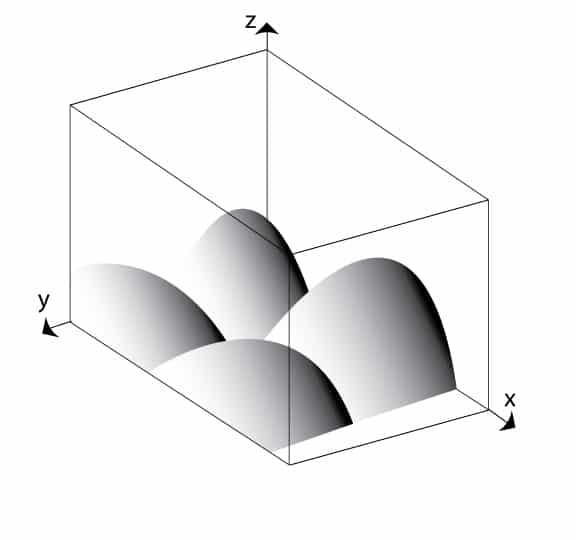
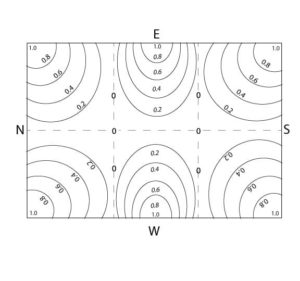
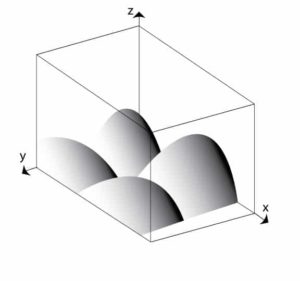
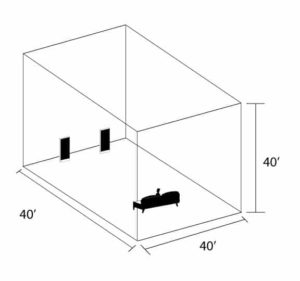





Hello Sir, I am Divya Srinivas, a final year student pursuing bachelors of Interior Design at Jawaharlal Nehru Architecture and Fine Arts University, Hyderabad. I am in a process of writing my bachelor’s thesis. The study is entitled “Sound Healing Wellness Center. ”
It would be really helpful if you could tell me what should be the size of the room and the ceiling height for a sound therapy room. also the materials that shall be used in the interior spaces, the problem that i am facing is i cannot completely use only sound absorbing materials. so i have to use both sound absorbing and sound reflecting materials, but i dont know in what ratio should i use them.
Itwould be really helpful if you could answer these questions and share your knowledge.
Thank you.
D, You will need a combination of diffusion and absorption. Reduce Rt-60 times in the room to 1 sec. and add diffusion to the ceiling.